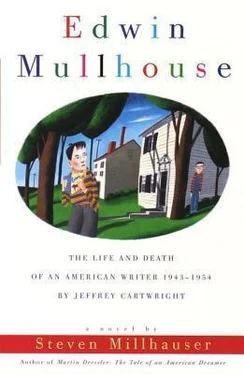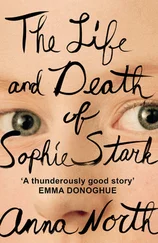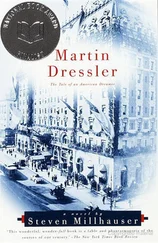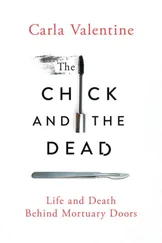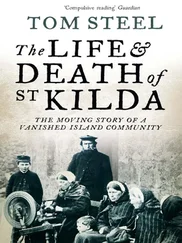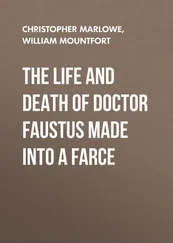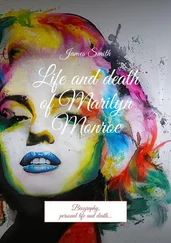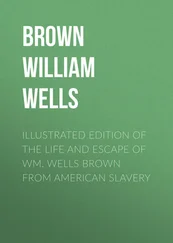Steven Millhauser - Edwin Mullhouse - The Life and Death of an American Writer 1943-1954
Здесь есть возможность читать онлайн «Steven Millhauser - Edwin Mullhouse - The Life and Death of an American Writer 1943-1954» весь текст электронной книги совершенно бесплатно (целиком полную версию без сокращений). В некоторых случаях можно слушать аудио, скачать через торрент в формате fb2 и присутствует краткое содержание. Год выпуска: 2011, ISBN: 2011, Издательство: Knopf Doubleday Publishing Group, Жанр: Современная проза, на английском языке. Описание произведения, (предисловие) а так же отзывы посетителей доступны на портале библиотеки ЛибКат.
- Название:Edwin Mullhouse: The Life and Death of an American Writer 1943-1954
- Автор:
- Издательство:Knopf Doubleday Publishing Group
- Жанр:
- Год:2011
- ISBN:9780307787385
- Рейтинг книги:3 / 5. Голосов: 1
-
Избранное:Добавить в избранное
- Отзывы:
-
Ваша оценка:
- 60
- 1
- 2
- 3
- 4
- 5
Edwin Mullhouse: The Life and Death of an American Writer 1943-1954: краткое содержание, описание и аннотация
Предлагаем к чтению аннотацию, описание, краткое содержание или предисловие (зависит от того, что написал сам автор книги «Edwin Mullhouse: The Life and Death of an American Writer 1943-1954»). Если вы не нашли необходимую информацию о книге — напишите в комментариях, мы постараемся отыскать её.
.
Edwin Mullhouse: The Life and Death of an American Writer 1943-1954 — читать онлайн бесплатно полную книгу (весь текст) целиком
Ниже представлен текст книги, разбитый по страницам. Система сохранения места последней прочитанной страницы, позволяет с удобством читать онлайн бесплатно книгу «Edwin Mullhouse: The Life and Death of an American Writer 1943-1954», без необходимости каждый раз заново искать на чём Вы остановились. Поставьте закладку, и сможете в любой момент перейти на страницу, на которой закончили чтение.
Интервал:
Закладка:
All
All
All in together girls
Never mind the weather girls
Rain
Snow
Sunshine bright.
But as we passed, already I heard among the shouts a voice crying: “Back! Back! Back! Back! Back!” The circle was three or four deep, and at first we could barely see past the older boys, who had the best places on the inside. Through arms and shoulders I had a confused impression of a white t-shirt, a light blue shirt, dark arms, a red shirt, a chin thrust back by a hand, a dark arm hooked around the grimacing face of Arnold Hasselstrom. We made our way around the circle, searching for a place; at a sudden opening Edwin squeezed in and was immediately shut out of view. I found my opening a few feet away, and managed to squeeze my way almost to the inner circle, where I was fortunate enough to find an excellent vantage point between two necks.
The fighters were barely moving. The tall boy stood with his arm hooked around Arnold Hasselstrom’s head, just under the jaw, pressing it against his chest, while Arnold Hasselstrom, whose anguished grimace was directed at me, was pushing the invisible face over him with the heel of his outside hand. With his inside hand Arnold Hasselstrom was gripping the arm that hugged him, while with his free hand the other boy was gripping the hand that pushed against his chin and that was probably trying to get a stranglehold on his throat. The curious immobility of the fighters, which in one sense rendered their struggle unexciting and even uninteresting, in another sense conveyed an impression of intense seriousness that filled me with alarm. I recognized Arnold Hasselstrom’s antagonist at once, an evil fifth-grader called Weasel who was always cursing and spitting at people and who always had at least three friends with him. He was more than a head taller than Arnold Hasselstrom. His thin brown arms with their long thin biceps were full of veins, and the close-shaved black hair on his thin hard skull contained on one side a small triangular bare spot that made you think of a notch in a tree. He wore black-and-white sneakers with no socks, beltless pants the color of semi-sweet chocolate, a white t-shirt, and a light blue unbuttoned shirt that hung down below his pockets; one of the short sleeves was rolled up above his shoulder but the other had fallen down. The match looked unfair, and might have looked ridiculously unfair if it were not for the general impression of solidity presented by Arnold Hasselstrom, as if he were a stump battling a rugged vine. But he seemed to be getting the worst of the still nearly motionless fight, for his eyes were shut tight, drops of sweat beaded his eyebrows, and his lips, stretched open over clenched teeth, seemed to be forming a cry of pain. Suddenly Weasel leaned back and simultaneously whirled around in a half-circle, lifting Arnold Hasselstrom briefly into the air and letting him down as he came to a stop. A shout went up from the crowd, most of whom seemed to be friends of Weasel’s. Again he turned, lifting Arnold Hasselstrom; when he stopped, Arnold Hasselstrom’s hand slipped from the jaw. Instantly Weasel smashed a fist into Arnold Hasselstrom’s face. Someone shouted “No fair!” Arnold Hasselstrom clutched blindly at the invisible face above him, missing; again Weasel smashed a fist into his face, hitting him directly in the eye. A shout went up from the crowd. Twisting in pain, Arnold Hasselstrom lowered his outside arm and tried to bury his face in it while Weasel, with a look of malignant triumph, proceeded to form one of those vicious fists with the third knuckle protruding, and began alternately to rub his knuckles back and forth on Arnold Hasselstrom’s head and to punch him in the neck and face. Someone shouted “Break it up!” but no one took up the cry. Arnold Hasselstrom looked quite helpless now; there was nothing he could do but shield his face by turning it inward, while Weasel punched and rubbed. And as I watched Arnold Hasselstrom struggling, suddenly I heard him shriek with pain. It was a high horrible sound that I had never heard before, like the sound of some imagined animal in pain; and it was not until a few seconds later that I realized the shriek had come from Weasel. For suddenly Weasel had abandoned his hold and with both hands was tugging at Arnold Hasselstrom’s hair, while Arnold Hasselstrom, with a sound like a growl, bit into his stomach. I half-expected to see him tear off a piece of bloody flesh, and no doubt he would have eaten Weasel alive if he had not had the better idea of hooking a leg around Weasel’s leg and tripping him. He fell on top of Weasel, who somehow managed not to smash his head against the tar, and then Arnold Hasselstrom was holding Weasel’s head by the cheeks and slamming it over and over against the ground. Suddenly there was a little pool of blood under his head. Arnold Hasselstrom stopped. He stood up. His left eye was swollen and bruised. On the bloody tar Weasel whimpered feebly. No one stopped Arnold Hasselstrom as he pushed through the opening circle and began to run.
When he reached the part of the playground where the tar turned into dirt and weeds, he picked up a stone and looked over his shoulder, but no one was following. He then ran up the narrow grass slope. and onto the sidewalk, never once looking back. I watched him run along until he was shut out of view by a tall hedge, and when I turned I saw Edwin standing with his hands in his pockets, staring at the distant hedge.
According to the newspapers, Mr. McKisco was shot five times as he entered Arnold Hasselstrom’s room. Three other bullets struck the wall to the right of the door. Arnold Hasselstrom then reloaded the.32 Colt automatic, picked up a cap pistol, and left the house. His grandmother was out shopping at the time of the shooting. He was found shortly before midnight in a wooden shack on a vacant lot in a remote neighborhood. Sergeant Flanagan said he hadn’t wanted to shoot the boy. He said the boy had thrown out a gun, come out with his hands up, and suddenly started shooting again. I forget what happened to Sergeant Flanagan. A week later Weasel reappeared on the playground with a small white patch on the back of his head. “Jim always believed in boys,” Mrs. McKisco was quoted as saying.
26
DURING THE MIDDLE YEARS Edwin and I saw well over two hundred cartoons. Intrigued by the titles, Edwin once began a list. I here give it in full:
Peeka Booboo, Lovey Dovey, Dandy Lions, Tamale and Tamale and Tamale, Scars and Stripes, Yankee Poodle, Hare-um Scare-um, No Chickee No Washee, Play for Cheeps, Finders Peepers, A Tail of Two Kitties, Much Achoo About Nothing, All’s Wail that Ends Wail, Dutch Tweet, Kit for Kat, Kit-napped, Bumble Bzzzzz, Warp in the Woof Woof, Arf and Arf, Bow-wow Movements (or Loose Bow-wows), Oinkers Away, Tails You Lose, Sittin’ Kitty, Go Fly a Kat, Warrin’ Puss, The Brothers KaraMOUSEov, Winnie the Pooch, The Wind in Your Woolies, Little Red Robin Hood, The Fall of the Mouse of Usher, Pie a la Moo, Pooches and Cream, Quackers and Cheese, Cat Be Nimble Cat Be Quick, Kit Carson (Coonskin Kat), Kit and Kapoodle, Do-It-Yourself Kit, Kit and Kin, Wyatt Chirp, Mouse Breaking, Ro-meeow and Alleycat, The Quality of Mousey, Cat as Cat Can, Madame Pussycat (music by Poochini), Is There a Dachshund in the House? Ali Baa Baa and the Forty Sheep, Fowl Play, The Howl and the Pussycat, Cockadoodle Don’t, Midsummer Mice Scream, Hare Today Gone Tomorrow, Hare! Hare! Hey Nonny Ninny, To Bzzz or Not to Bzzz, Pair o’ Dice Lost, Hot Cross Bunny, Atomic Fishin’, Kitty Cornered, Much Ado About Mutton (or All’s Wool that Ends Wool).
A number of things about this list are of special interest to the student of Edwin’s work. First of all, the influence of the animated cartoon is clearly verbal as well as visual: the titles are a feast of elementary wordplay. Second, a great many bits and pieces of adult culture first came to Edwin in this distorted fashion; indeed the cartoon titles encouraged in Edwin a tendency to think of adult culture solely as a source of puns and jokes. Often in the Middle Years, on rainy afternoons, we would spend hours among his father’s books in the three living-room bookcases, inventing cartoon versions of their titles. I recall simple ones like Moby Duck, Holy Bubble, and Alexander Poop, and more elaborate ones like Boogeyman’s Conversations with Ghosty, Selected Bones of T. S. Alleycat, and The Whine and Call of the Woman Vampire. Edwin often missed the point of cartoon titles and had to ask his father to explain, for instance, Much Achoo About Nothing. Dr. Mullhouse was delighted by the whole business and was quite capable of tilting his head forward, raising his eyes solemnly to the top of his new bifocals, and telling Edwin in the full accents of professorial dignity that Much Achoo About Nothing was a play by William Sneeze. Edwin would frown for a few moments in desperate concentration before making the connection; his intense expression would melt to a blankness betrayed only by his suddenly knowing eyes, and at last his face would contort into a fit of the spluttering giggles, which he tried fiercely to stifle in order to command his father to be serious, but with each effort to overcome the spasm he set off another and greater one, so that he presented to the mildly smiling observer the interesting spectacle of a face grim and grinning in quick succession, as if it belonged to an idiot. Third, and most important, it seems to me, is a certain disturbing quality of the list, a quality that I shall define, after considerable meditation, as a repellent cuteness. I shall return to this quality in my discussion of Edwin’s immortal masterpiece, in Part Three.
Читать дальшеИнтервал:
Закладка:
Похожие книги на «Edwin Mullhouse: The Life and Death of an American Writer 1943-1954»
Представляем Вашему вниманию похожие книги на «Edwin Mullhouse: The Life and Death of an American Writer 1943-1954» списком для выбора. Мы отобрали схожую по названию и смыслу литературу в надежде предоставить читателям больше вариантов отыскать новые, интересные, ещё непрочитанные произведения.
Обсуждение, отзывы о книге «Edwin Mullhouse: The Life and Death of an American Writer 1943-1954» и просто собственные мнения читателей. Оставьте ваши комментарии, напишите, что Вы думаете о произведении, его смысле или главных героях. Укажите что конкретно понравилось, а что нет, и почему Вы так считаете.
